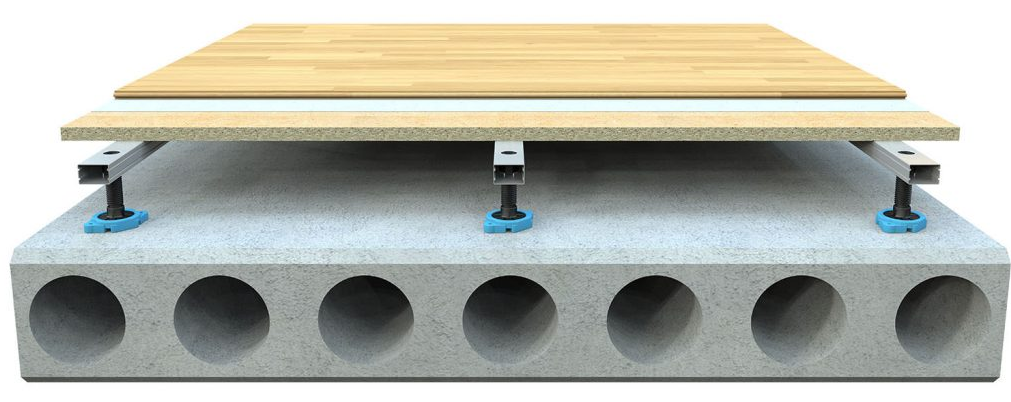Raised Acoustic Flooring: A Modern Solution for Acoustic Comfort and Functionality
Raised acoustic flooring systems are a modern solution designed to enhance both the acoustic comfort and functionality of interior and exterior spaces. Stop Sound presents the key aspects of these innovative FLS systems.
What Are Raised Acoustic Floors?
Raised acoustic floors are floor systems installed above the existing surface, creating a gap between the new and old flooring. This space allows easy passage for cables, pipes, and other infrastructures, while also providing significant sound insulation and vibration protection. The use of specialized materials and technologies ensures the reduction of noise and vibrations, improving the quality of the indoor environment.
Types of Raised Acoustic Flooring
There are various types of raised acoustic flooring systems, depending on the needs and requirements of each space:
- Systems with Wooden Beams: These systems use wooden beams (ranging from 45mm to 120mm in thickness) to support the floor, offering a natural feel and aesthetic. They are suitable and certified for both interior and exterior spaces.

- Systems with Steel Beams: These systems offer greater strength and stability, making them ideal for industrial or commercial spaces with higher load requirements.

-
- Certified Acoustic Systems: These systems incorporate special anti-vibration feet, which are selected based on the project and its requirements, reducing impact noise and enhancing the acoustics of the space.

Advantages of Raised Acoustic Flooring
The use of raised acoustic flooring offers multiple benefits:
- Sound Insulation: Reduction of impact noise up to ΔLw=28dB, creating a quieter and more comfortable environment.
- Ease of Installation: Fast and dry installation, without the need for wet materials or significant delays.
- Installation Speed: Option to choose the fixing method via adhesive, screws, or nails.
- Adjustable Height: Ability to adjust the system's height from 12 - 414 mm according to the space's needs, allowing easy passage for infrastructure.
- Environmentally Friendly: Use of materials with FSC and PEFC certifications, ensuring sustainability and ecological awareness.
Fields of Application
Raised acoustic floors find applications in a variety of spaces:
- Offices: Improving acoustic comfort and ease of cable management.
- Data Centers: Ensuring the proper functioning of systems through cable management and thermal insulation.
- Commercial Spaces: Creating flexible spaces with adaptability to business needs.
- Industrial Spaces: Resistance to heavy loads and protection from vibrations.
Flexibility
The flexibility of raised acoustic floors allows adaptation to various construction requirements:
- Adaptability: Suitable for any floor surface and covering, providing solutions for every need. Uneven surfaces are no longer an issue, as the system adapts to the irregularities of the existing floor.
- Facility Management: Creating space for installations and natural ventilation, facilitating maintenance and upgrading of infrastructures.
Certifications
The selection of certified systems ensures quality and safety:
- FSC & PEFC: Certifications that guarantee the use of wood from sustainable sources, contributing to environmental protection.
Overall, raised acoustic flooring provides a comprehensive solution for improving the acoustics, functionality, and aesthetics of interior spaces, offering flexibility and reliability in every application.


